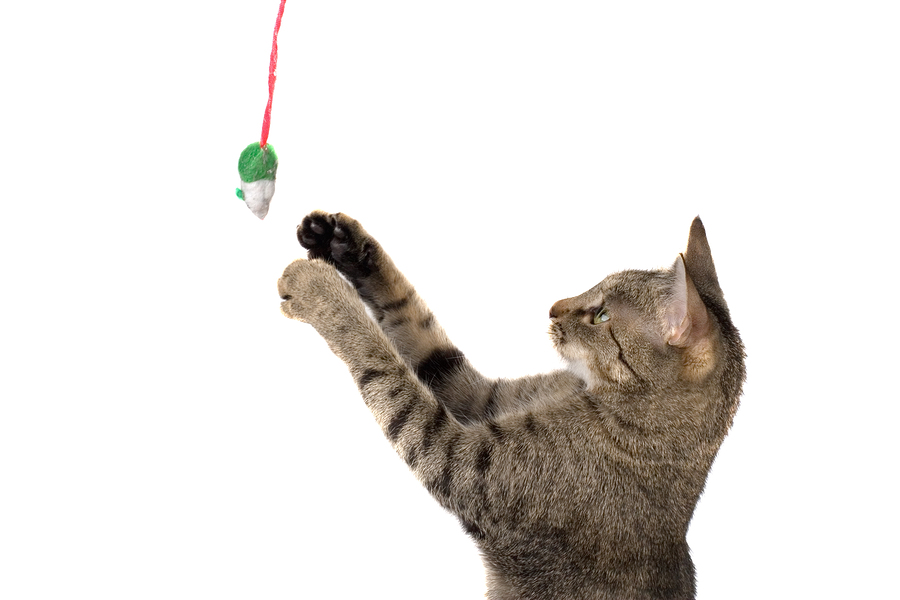Even if you’ve shared your life with cats for years or decades, their ways can be mysterious. Cat lover and veterinarian Dr. Liz Bales shares some secrets to understanding how cats think and why they do the things they do.
A mouse has only thirty calories. That is a meal for a cat. This translates to about 10 to 15 pieces of cat kibble or about one ounce of canned cat food. Cats who are not being fed by humans would have to hunt and eat eight to 12 mice every single day. Nature designed cats to have a burst of activity, followed by a tiny meal many times a day, not a giant meal served up in a bowl once or twice a day. Cats who gobble up huge portions of food at a time will actually vomit it right back up. I call this “scarf and barf.” There is simply not enough room for all of that food in a cat’s stomach. For a happy, healthy cat who doesn’t scarf and barf, feed tiny portions of food throughout the day and night.
You think you have lots of litter boxes for your multi-cat household, but you don’t. The most educated cat parents know they should have one more litter box than the number of cats that they have. If they have six cats, they have seven litter boxes. But here is where things go wrong. Most people have all of their litter boxes lined up in one spot in the house: for example, seven litter boxes in a row in the basement. If you asked your cat how many litter boxes are in that row, they will tell you one. Those seven litter boxes need to be in separate locations of the house. What?!?!!? Seven litter boxes all around the house? Yes. Cats get along in a group by avoiding conflict. If Cat A is picking on Cat B, Cat B will do everything possible to stay away from Cat A. Cat A will pick on Cat B by preventing him from getting to critical resources: food, water, and the bathroom. If there is only one location, then Cat B risks being ambushed on his way in or out of the litter box, or chooses to eliminate on your pillow or basket of clean laundry instead.
You know how you like your table set with your food on a plate next to your drink? Your cat doesn’t. A cat’s idea of a nice meal is very different from a human’s. Cats hunt mice, birds, lizards, and such. They eat many small meals a day and leave inedible pieces and parts behind. Instinct tells them that water near food is undesirable, so cats prefer to drink in a separate location from where they eat. Try serving your cat water in many locations around the house, not just the kitchen. Some cats prefer flowing water, so you can add a cat water fountain or leave your tap running at a trickle.
Cats purr when they are happy. Yes. This is accurate. But cats also purr when they are in pain, anxious, or frightened. This is similar to a person who laughs when they think something is funny and also when they are nervous or scared. To interpret what the purr or laugh means, you need to do more than just confirm the presence or absence of the sound. Context is everything. A cat who is purring because she is happy is likely stretched out with soft, relaxed muscles. Conversely, a cat purring as a result of pain is tense and has her legs tucked up close to her body.
This article was reviewed/edited by board-certified veterinary behaviorist Dr. Kenneth Martin and/or veterinary technician specialist in behavior Debbie Martin, LVT.
Liz Bales, VMD, is a 2000 graduate of The University of Pennsylvania School of Veterinary Medicine and has a special interest in the unique behavioral and wellness needs of pets. She is the founder of Doc and Phoebe’s Cat Company and the inventor of The Indoor Hunting Feeder for cats and sits on the Dean’s Alumni Council at The University of Pennsylvania, the Advisory Board for AAFP Cat-Friendly Practice, and the Advisory Board of Fear-Free.








